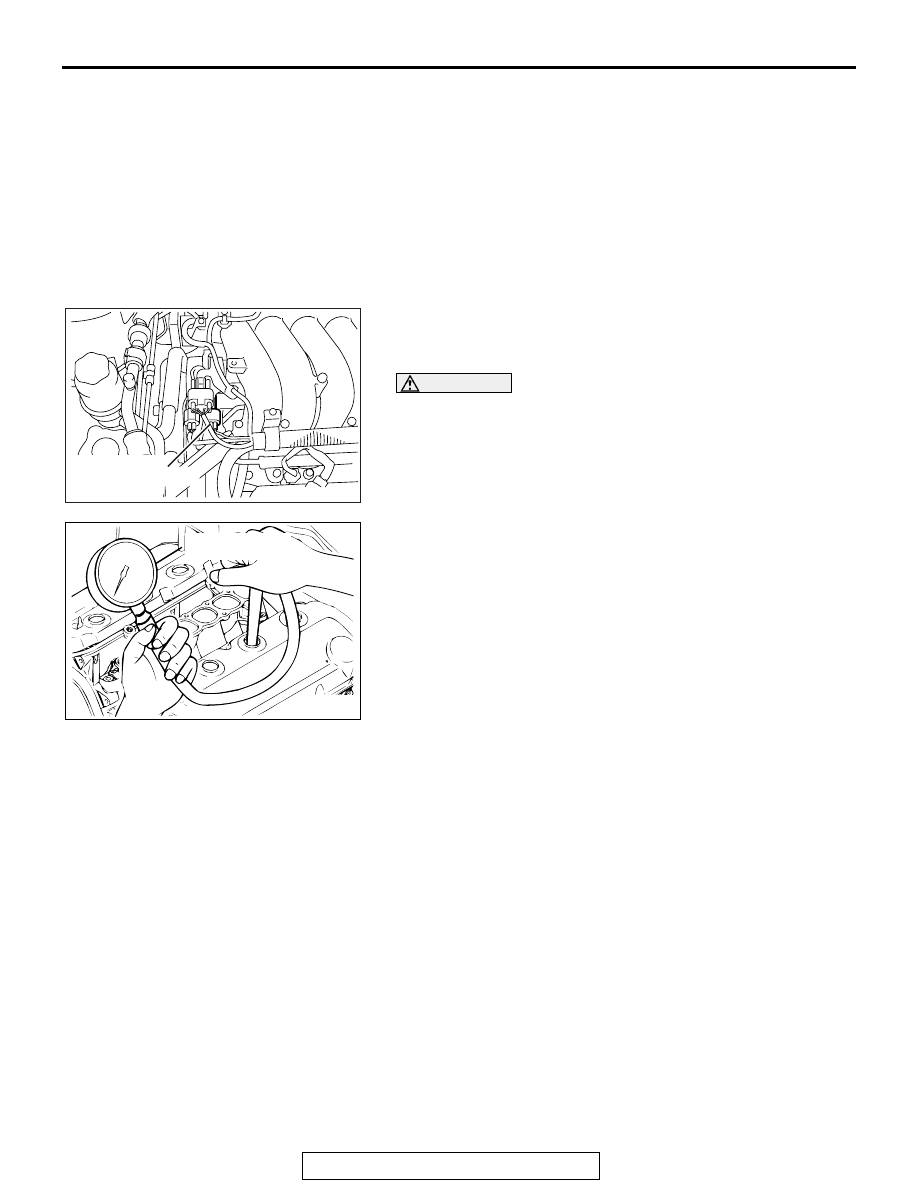Mitsubishi 380. Manual - part 752

ON-VEHICLE SERVICE
TSB Revision
ENGINE MECHANICAL <3.8L ENGINE>
11A-10
COMPRESSION PRESSURE CHECK
M1111002601112
Required Special Tool:
: Diagnostic Tool (MUT-III)
1. Before inspection, check that the engine oil, starter and
battery are normal. Also, set the vehicle in the following
condition:
• Engine coolant temperature: 80 − 95°C (176 − 203°F)
• Lights and all accessories: OFF
• Transmission: P range
2. Remove all of the ignition coils and spark plugs.
3. Disconnect the crankshaft position sensor connector.
NOTE: Doing this will prevent the engine control unit from
carrying out ignition and fuel injection.
WARNING
Keep your distance from the spark plug hole when
cranking. Oil, fuel, etc., may spray out from the spark
plug hole and may cause serious injury.
4. Cover the spark plug hole with a shop towel etc., during
cranking. After the engine has been cranked, check for
foreign material adhering to the shop towel.
5. Set compression gauge to one of the spark plug holes.
6. Crank the engine with the throttle valve fully open and
measure the compression pressure.
Standard value (at engine speed of 200 r/min): 1,550
kPa (225 psi)
Minimum limit (at engine speed of 200 r/min): 1,110
kPa (161 psi)
7. Measure the compression pressure for all the cylinders, and
check that the pressure differences of the cylinders are
below the limit.
Limit: 98 kPa (14 psi)
8. If there is a cylinder with compression or a compression
difference that is outside the limit, pour a small amount of
engine oil through the spark plug hole, and repeat the
operations in steps 6 to 8.
(1) If the compression increases after oil is added, the cause
of the malfunction is a worn or damaged piston ring
and/or cylinder inner surface.
(2) If the compression does not rise after oil is added, the
cause is a burnt or defective valve seat, or pressure is
leaking from the gasket.
9. Connect the crankshaft position sensor connector.
10.Install the spark plugs and ignition coils.
AK303010
CRANKSHAFT
POSITION SENSOR
CONNECTOR
AB
AKX00436
COMPRESSION
GAUGE
AB